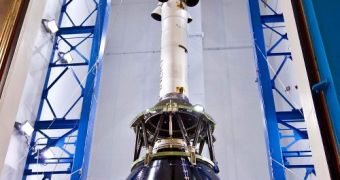Engineers at the Lockheed Martin Corporation announce that the NASA Orion Multi-Purpose Crew Vehicle (MPCV) has just started another round of harsh tests. The trials are meant to assess the vehicle's compliance with the guidelines the American space agency put forth for its next spacecraft.
The MPCV is an essentials-only, stripped-down version of the Orion Crew Exploration Vehicle that NASA began developing under Project Constellation. However, massive budget cuts, and ultimately the cancellation of the entire Project, eventually led to it being reconverted into this vehicle.
A prototype test model was completed at Lockheed earlier this year, and the company did not waste any time putting it to the test. In 5 to 6 years, the spacecraft could roar to the sky, taking astronauts to the Moon, Mars, or a near-Earth object (NEO).
While the American space agency is funding private corporations that build spacecraft capable of reaching low-Earth orbit (LEO), NASA itself is no longer involved in such efforts. Rather, its long-term plan is to leave LEO to corporations, while it sets its target on other celestial bodies.
At this point, the MPCV is being tested to see whether it can handle the rigors of long space trips. Right now, it is being put through sound pressure and dynamic forces tests, which are meant to assess how it will behave during launches and water landings.
For this type of test, Orion has been mated with its Launch Abort System (LAS). As seen in the image attached to this article, the LAS is a long pole that is outfitted with four rocket thrusters. In case an emergency occurs during launch, the LAS swoops Orion into the air, to safety.
This is a “buildup of configurations so we can understand how each of the various components respond to the acoustic environments,” lockheed acoustics expert Paul Sannes is quoted by Space as saying.
“What we do with the data is use [it] to compare predictions for the responses that we see. Things like tanks that hold fuel, thrusters, vehicle computers and avionics, antennas – all the components of the vehicle – so we understand what we need to build a capable and robust vehicle,” he added.
Under the new guidelines NASA adopted, the agency needs to put astronauts on a NEO by no later than 2025. By the early 2030s, it has to deploy a crew on the surface of Mars. If we are to establish a colony there, then experts warn that we still have a long way to go.
There are numerous new technologies, both for spacecraft and humans, that need to be perfected before we can contemplate an 18-month flight to the Red Planet. The Mars500 experiments, which will conclude in about three months, is the first to assess the effects of such prolonger isolation on the mind.

 14 DAY TRIAL //
14 DAY TRIAL //